People
See the Top Asian Collectors Who Are Driving the Global Art Market
Thriving demand and wealth accumulation make for a powerful combo.
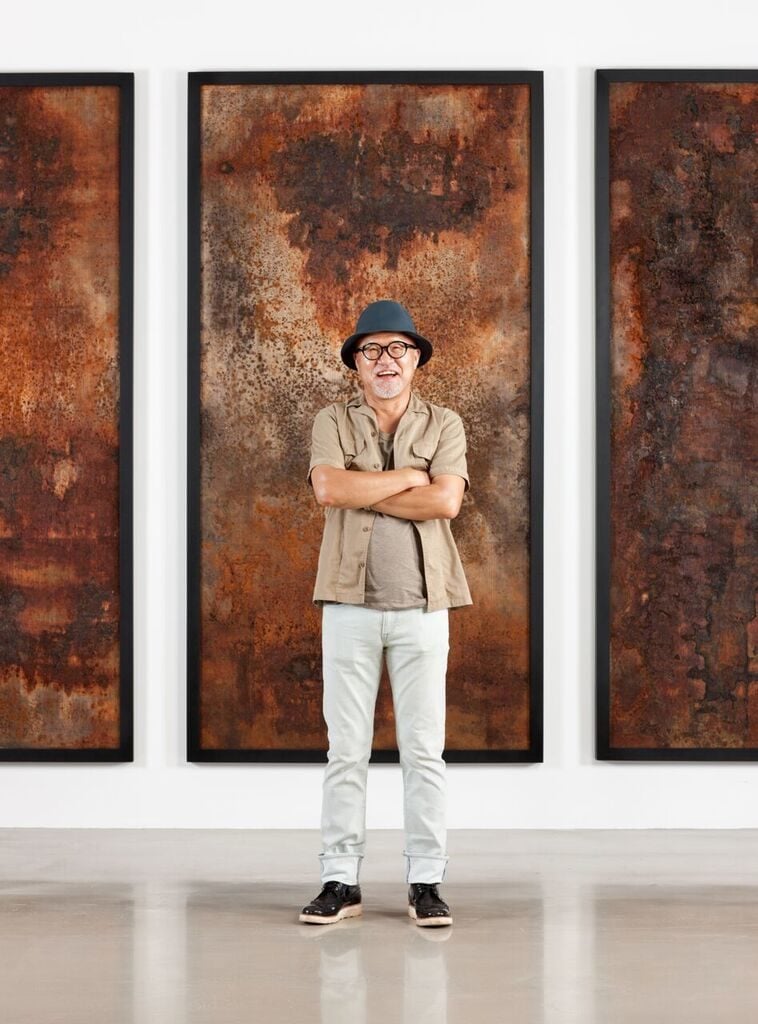
Thriving demand and wealth accumulation make for a powerful combo.

Eileen Kinsella

Despite major shifts in the global auction market—including steep drops in volume seen at the recent major spring New York sales at Sotheby’s, Christie’s and Phillips—buyers from China, Japan, and Hong Kong have consistently racked up headlines in recent months with big-ticket purchases.
The surge in buying can be connected, in no small part, to the pointed trend occurring in the region. According to the latest CapGemini World Wealth Report, the Asia-Pacific region recorded robust high net worth individuals (HNWI) and wealth growth rates (9.4 percent and 9.9 percent, respectively). It was the highest across the globe, edging past North America to become the region with the highest HNWI wealth of $17.4 trillion (yes, that’s trillion).
With this in mind, artnet News surveyed experts to see who are the top collectors in the region and what they are buying. Some names will be familiar to readers of the artnet News Index: The World’s Top 100 Art Collectors, but others are new.
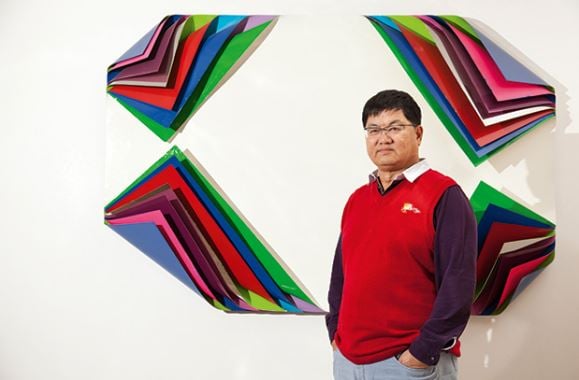
Yang Bin. Courtesy of Sotheby’s.
1. Yang Bin (China)
Yang Bin has been described as one of Beijing’s most public collectors. His habit started in the 1990s when he asked an artist friend to supply work for a newly purchased residence, and then became fascinated with the oil paintings hanging on his wall. Though he started with Chinese realist painters, his contemporary art collection reportedly numbers more than 1,000 pieces. In interviews, the car dealer has described collecting contemporary art as “a style and a way of living,” emphasizing: “It is not just a decoration.”
With his wife, Yan Qing, he owns Aye Gallery in Beijing. He owns work by Mu Boyan, Anish Kapoor, and Jorg Immendorff, and has been a champion of Liu Wei. He has also mentioned that hosting daily parties at his house was a great way to learn about contemporary art.

Wang Bing. Courtesy of finance.sina.com.cn
2. Wang Bing (China)
In 2014, Wang Bing founded the New Century Art Foundation (NCAF) in Beijing, aimed at studying and promoting Chinese contemporary art. NCAF provides support for Chinese contemporary art outside of the existing “art ecology” according to its website. Wang’s sizeable collection features a strong focus on Chinese contemporary stars including Qiu Xiaofei, Wang Yin, Cao Fei and Liu Ye.
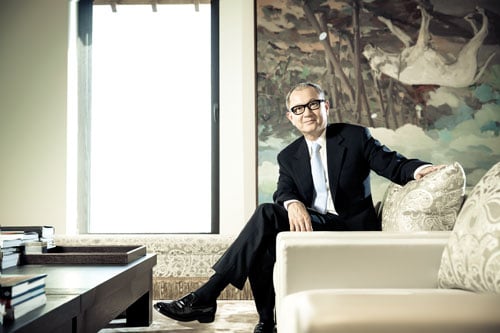
Pierre Chen. Courtesy Andrew J. Loiterton/Pierre Chen.
3. Pierre Chen (Taiwan)
Though Pierre Chen, said to be Taiwan’s top collector, has more recently stepped down from the helm of his electronics component empire, Yageo, he said art and music was always a way to balance his life. He formerly described his work life as “fighting everyday because there is always some new technology coming to the market,” in an interview with Sotheby’s magazine. His collection includes work by Georg Baselitz, Francis Bacon, Gerhard Richter, Cy Twombly, Marc Quinn, Andreas Gursky, and Mark Rothko. As reported in artnet News’ top 100 list, he made his biggest purchase at Christie’s this past May when he snapped up Scottish artist Peter Doig’s Swamped (1990) for $26 million. Forbes estimates his net worth at $1.96 billion and he ranks number 13 on its list of Taiwan’s richest.
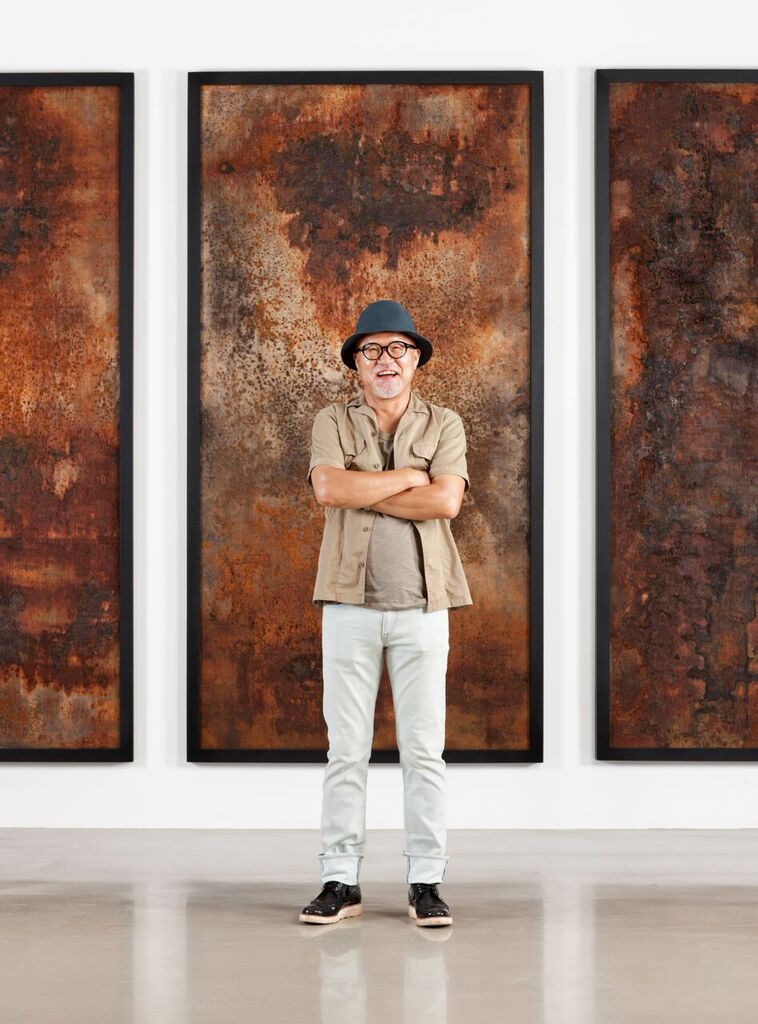
Kim Chang-Il. Courtesy of the Arario Museum.
4. Kim Chang-il (South Korea)
With a collection that numbers over 3,700 works, the South Korean entrepreneur counts Andy Warhol, Damien Hirst, Gerhard Richter, Cindy Sherman, and Nam June Paik among the artists in his collection, as reported in our top 100 list. He opened the Arario Museum just two years ago. It currently has branches in Seoul and Jeju Island.

Adrian Cheng. Courtesy photographer Eric Piermont/AFP/Getty Images.
5. Adrian Cheng (China)
Cheng, who is among the world’s youngest billionaires, is the founder of the K11 Art Foundation (KAF), a Chinese non-profit which promotes contemporary art. A residency program for emerging Chinese artists at New York’s New Museum, as artnet News reported on last month, is the latest in a string of art world power moves by the real estate heir.
This past March, he joined the board of directors of New York’s Public Art Fund. He is also a board member of the West Kowloon Cultural District Authority, a board director of the National Museum of China Foundation, trustee of Royal Academy of Arts, part of the visiting committee of The Metropolitan Museum of Art, a member of TATE’s Asia Pacific Acquisitions Committee, and a member of International Circle of Centre Pompidou.
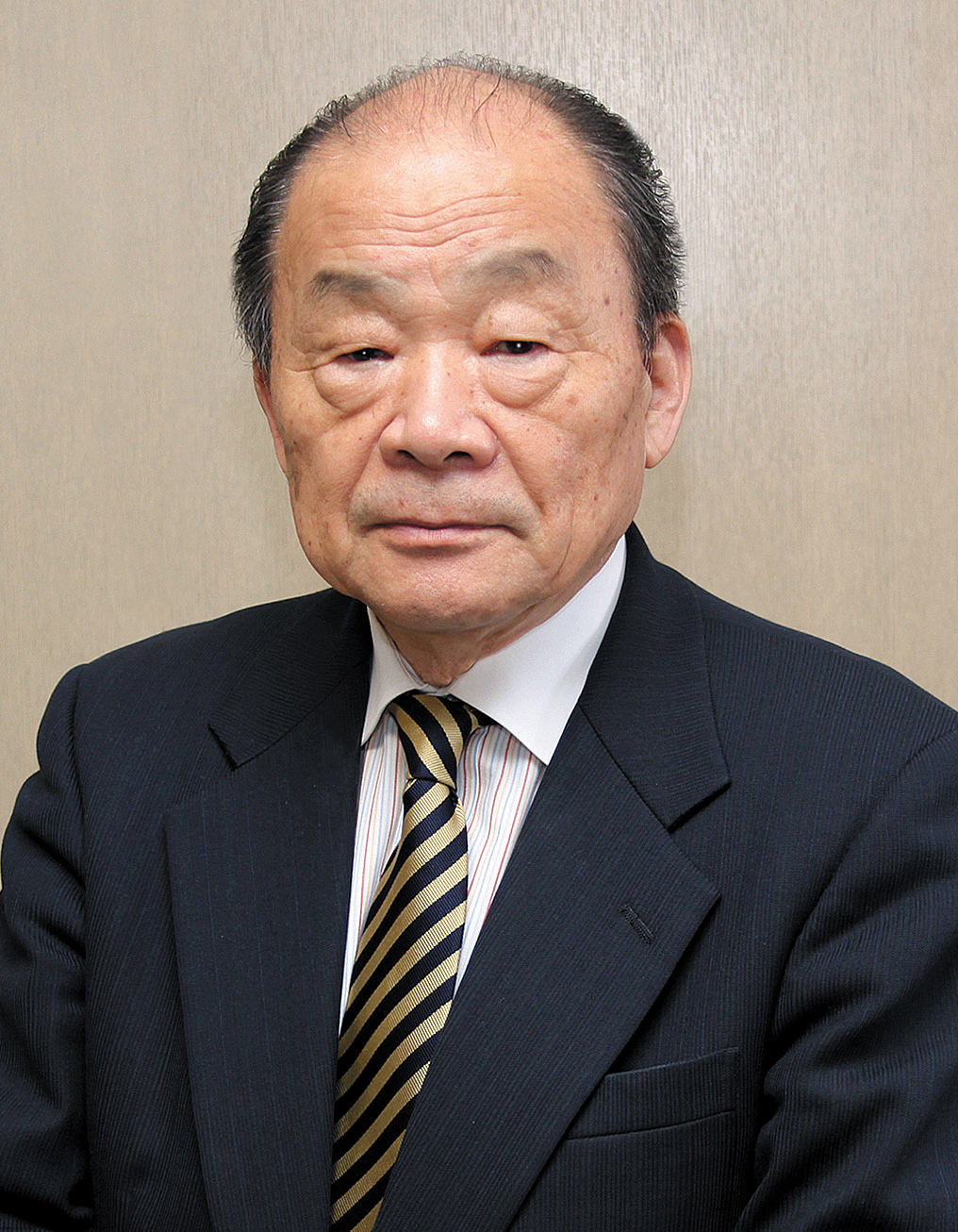
Hikonobu Ise. Courtesy Hikonobu Ise.
6. Hikonobu Ise (Japan)
This year marked Hikonobu Ise’s debut on artnet News Top 100 list. He buys widely across areas including Japanese decorative arts and Chinese ceramics, as well as Impressionist, modern, and contemporary art.
In an interview with Christie’s this past June, where he was named one of Asia’s most powerful collectors, Ise said his collection includes about 70 works and named some of his favorite objects, including a Chinese “palace” bowl that he says “grabbed my heart” at a preview; a still life by Paul Cézanne and a Japanese painting, A Rooster under the Tree, by Jakuchu Ito.
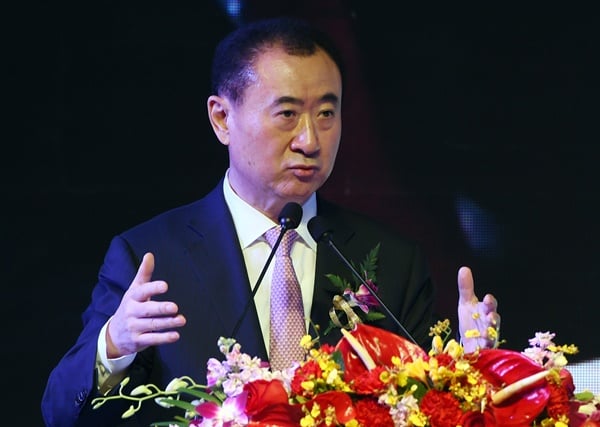
Wang Jianlin. Courtesy of Greg Baker/AFP Photo/Getty Images.
7. Wang Jianlin (China)
With an estimated net worth of $33 billion, according to Forbes, businessman Wang Jianlin ranks as Asia’s richest man. Acquisitions in recent years include Pablo Picasso’s Claude and Paloma (1950) for $28.2 million and Claude Monet’s Bassin aux nymphéas, les rosiers (1913) at auction.
Wang’s spokesman told Forbes that since the acquisition of the Picasso canvas, “We have been devoted to collecting original and important works representative of key developments in art history.”
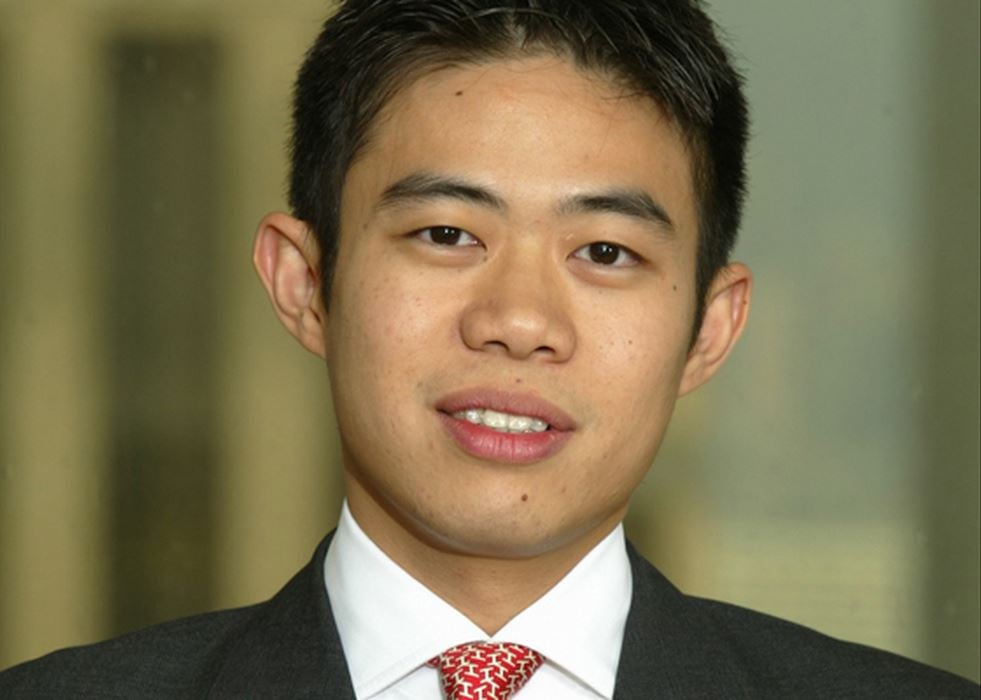
Alan Lau. Courtesy West Kowloon.
8. Alan Lau (China)
As a member of the Tate’s Asia-Pacific Acquisition Committee, Alan Lau began collecting roughly a decade ago but had long been fascinated with art, according to a 2013 interview in online art platform Ocula.
Growing up in Hong Kong, he says he read eagerly about artists such as Pablo Picasso, Andy Warhol and Claude Monet, and recounts the jolt he got from visiting Saatchi Gallery and “seeing a shark in a tank and a pool of oil,” and wondering whether it was in fact art. The first piece of art he purchased was by Tsang Tsou Choi, known as the “King of Kowloon” for his graffiti. More recently, Lau donated conceptual artist Tino Sehgal’s Guards Kissing (2002) to the M+ Museum of Hong Kong’s West Kowloon Cultural District.
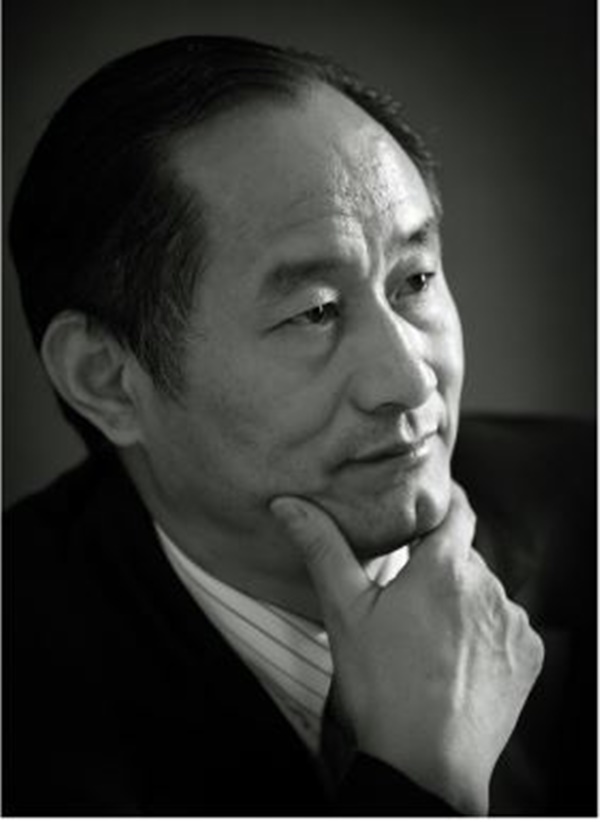
Yan Lugen. Courtesy of Yan Lugen.
9. Yan Lugen (China)
Chinese real estate magnate Yan Lugen started buying works by Western artists, such as Pablo Picasso, Auguste Rodin, Claude Monet, Pierre-Auguste Renoir and Paul Gauguin in the 1990s. He founded a private museum in Nanjing, the Baijia Lake Museum, which hosts the Nanjing International Art Festival.
As he told Peak Magazine in an interview last year: “Art brings all nationalities together. It shouldn’t matter whether the artist is from the East or West, because art is not bounded by geography.” Lately, Lugen has been introducing modern Chinese ink paintings to a wider audience through traveling exhibitions. His private museum showcases, among other works, a major oil painting—reportedly worth $4 million—by Chinese artist Chen Yifei.
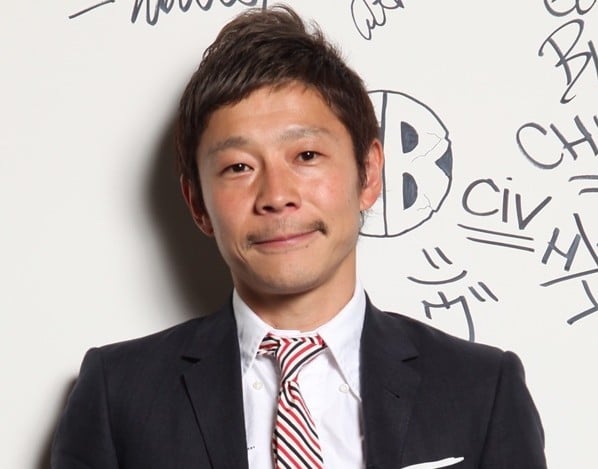
Yusaku Maezawa. Image ©Yusaku Maezawa.
10. Yusaku Maezawa (Japan)
Billionaire Japanese fashion mogul Yusaku Maezawa exploded on to the scene this past spring when he dropped $98 million at auctions in just two days at Christie’s and Sotheby’s. His pricey purchases included a $57.3 million Basquiat, a $9.6 million Richard Prince, a $6.8 million Koons, a $5.7 million Alexander Calder, and a $1.7 million Bruce Nauman. He was also behind the record price for in-demand Romanian painter Adrian Ghenie. We expect Maezawa’s hot streak to continue in future auction seasons: Forbes puts his net worth at $2.7 billion and ranks him as number 17 on Japan’s 50 Richest list.

11. Zhang Rui (China)
Telecommunications entrepreneur Zhang Rui is considered part of a group of mainland China’s so-called “super-collectors,” with a collection so large—at 800 pieces—that much of it must be kept in storage since his Beijing mansion is already at capacity. In a 2012 interview he said buying art for oneself is “important” because it reflects one’s “appreciation of beauty.” Luckily for him, he got in before the huge Chinese contemporary art market boom of 2005, and remained committed even during the steep downturn in prices in 2008-09. He says he never sells, even in challenging economic times. For those who know this segment of the market well, it is telling that he was able to buy a work by Chinese art superstar Zhang Xiaogang for about $10,000. Not surprisingly, it’s now worth upwards of about $3 million. He also owns work by Wang Guangyi, Fang Lijun, and Yue Minjun. One of his most prized artworks is a portrait by Zeng Fangzhi, who is best known for his “Mask” series. “I have the first one, where he takes off the mask,” said Zhang, who bought the painting for ($12,667) in 2004.
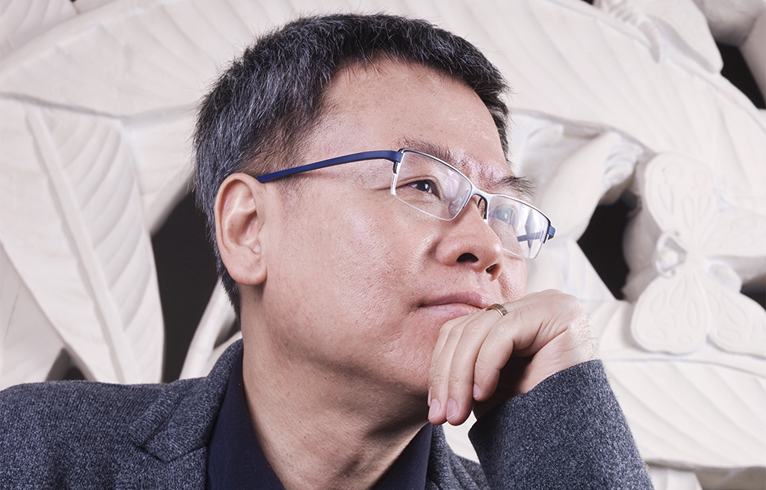
Budi Tek. Image: Courtesy Budi Tek.
12. Budi Tek (Indonesia)
When artnet News sat down with Budi Tek last summer for an interview, he waved off questions about how he got started collecting because he said he would rather focus on the present and his then-current major projects, which included bringing the famous Rain Room, designed by Random International, to his Yuz Museum in Shanghai. The next show to open at the Yuz Museum is “OVERPOP.” Opening on September 4, the show is based on the Yuz Museum collection and devised as a curatorial dialogue between curator and art dealer Jeffrey Deitch and Chinese contemporary art expert Karen Smith.
Today, Tek is in the process of creating an Inhotim-type art-park that will be called “Budi Desa,” meaning “Budi Village,” in Bali. He explained that land must be bought piecemeal in Indonesia, so he has slowly been acquiring parcels to create his art-filled village for roughly the past two decades. The planned museum will occupy five forested hectares and will display the sort of monumental works Tek favors, including Anselm Kiefer’s Velimir Khlebnikov: Fates of Nations: The New Theory of War (2011–14), which consists of two huge vitrines containing rusting miniature submarines. Tek says when the Rain Room eventually goes to Bali on permanent view, it will be “Rain Room in the Rain Forest.”
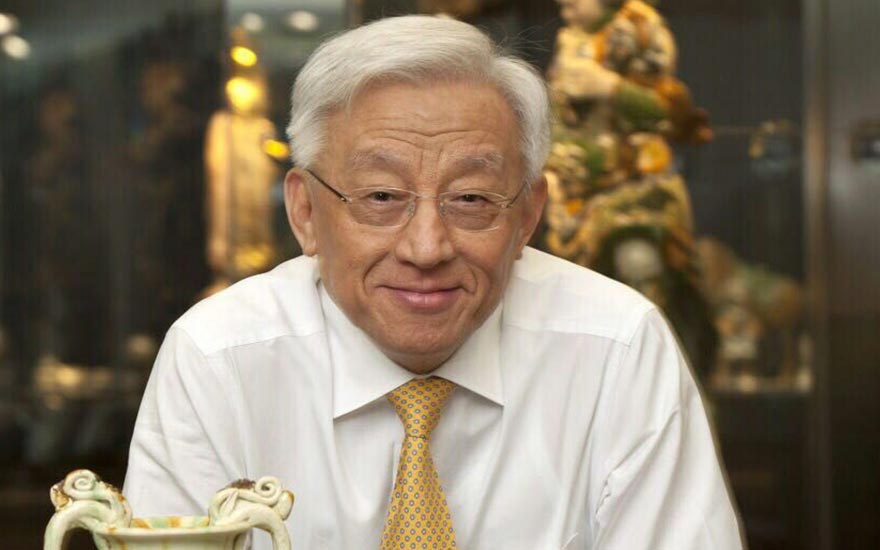
Robert Tsao. Courtesy of Christie’s.
13. Robert Tsao (Taiwan)
Taiwanese businessman Robert Tsao started collecting in the 1990s and has largely adhered to traditional tastes. Christie’s named him as one of its foremost Asian art collectors, noting his 2007 purchase, for nearly $9 million, of an Imperial brush pot from the Qianlong period at its stellar Hong Kong sale.
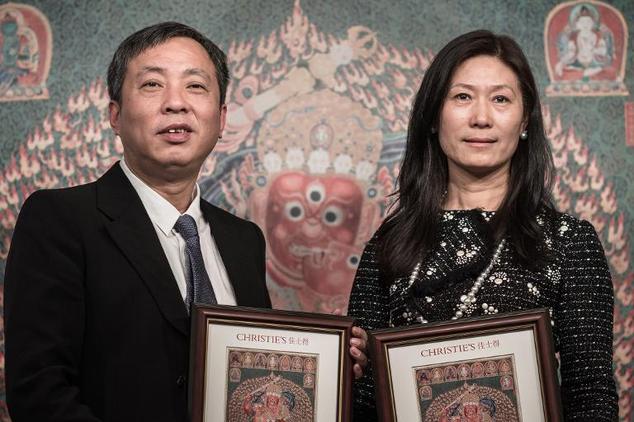
Liu Yiqian and his wife Wang Wei receiving the certificate from Christie’s for their purchase of a record-priced Tibetan tapestry. Courtesy of PHILIPPE LOPEZ/AFP/Getty Images.
14. Wang Wei and Liu Yiqian (China)
In 2014, former taxi driver Liu Yiqian turned art world heads with his $32 million purchase of a Chinese “chicken” cup that he purchased with a Black American Express card. The art market show of strength demonstrated by he and his wife, Wang Wei, was even more intense in the past year, including their acquisition of Amedeo Modigliani’s Nu Couche (1917) at Christie’s New York for $170.4 million, and this past June, Jenny Saville’s Shift (1996-7), at Sotheby’s London for a record $9 million. The picture, which features nude women squashed together like sardines, was shown at Charles Saatchi’s landmark exhibition, “Sensation” show in 1997.
Liu has also made news for announcing plans to open a Chonqing outpost of his Long Museum, which already has two locations in Shanghai, and for acquiring shares of the Beijing Council International Auction Company. He also made waves this year at Art Basel for purchasing a mammoth Gerhard Richter canvas at Marian Goodman.
15. Andrew Xue (China)(not pictured)
Andrew Xue is a board member of the Ullens Center for Contemporary Art (UCCA) and is also a board member of Wang Bing’s New Century Art Foundation. This past May, together with Adrian Cheng, Zhou Dawei, Zhao Lingyong and Budi Tek, he donated Zhao Yang’s Spring to Centre Georges Pompidou. It was a great boon to the Parisian institution.
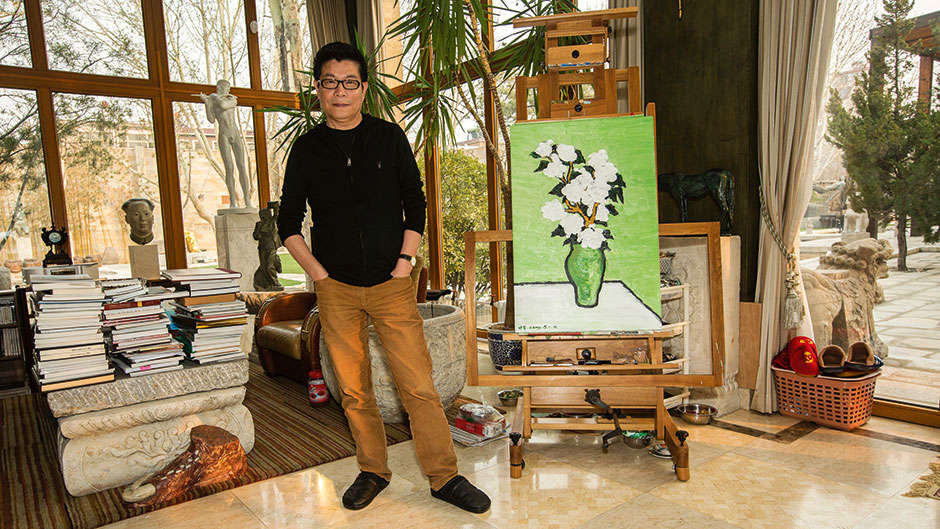
Wang Zhongjun. Courtesy of Sotheby’s.
16. Wang Zhongjun (China)
Chinese movie tycoon Wang Zhongjun shelled out $29.9 million for a Picasso canvas auctioned from the legendary Goldwyn family collection at Sotheby’s New York this past May. Femme au Chignon Dans un Fauteuil (1948), was a portrait of the artist’s lover Françoise Gilot. The media mogul is chairman and co-founder of Huayi Brothers Media Group, a major Chinese movie company, and is one of his country’s richest men.
Earlier this year, Zhongjun made headlines when he snapped up Vincent van Gogh‘s 1890 painting Still Life, Vase with Daises and Poppies for $61.8 million.
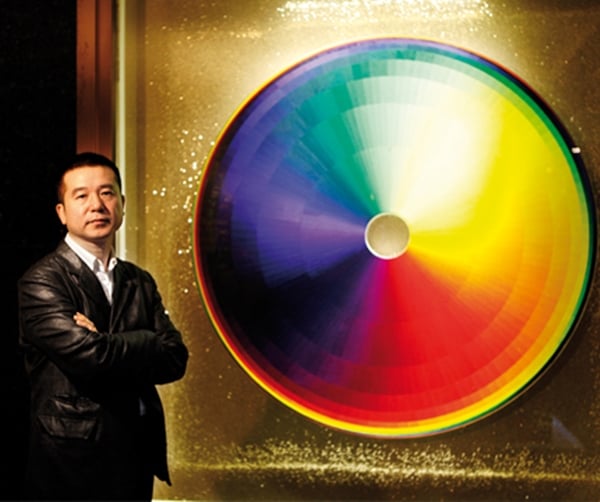
Qiao Zhibing.
Photo: Courtesy of LeapLeapLeap.
17. Qiao Zhibing (China)
Chinese entrepreneur and nightclub owner Qiao Zhibing is frank about the fact that he first started buying art as a way of decorating all the empty wall space in his clubs, but it wasn’t long before it became a serious habit in its own right. He opened Qiao Space in September 2015 and has organized major solo shows for Wilhelm Sasnal and Cheng Ran, in addition to displaying his own collection.
He recently told artnet News that he is planning to open a second Shanghai space in December 2017. The complex will consist of plazas, gardens, a bookstore, an education center, restaurants, and more than 100,000 square feet of exhibition space. Among the artists in Qiao’s collection are Antony Gormley, Olafur Eliasson, Sterling Ruby, Thomas Houseago, Theaster Gates, Martin Creed, and Matt Saunders.
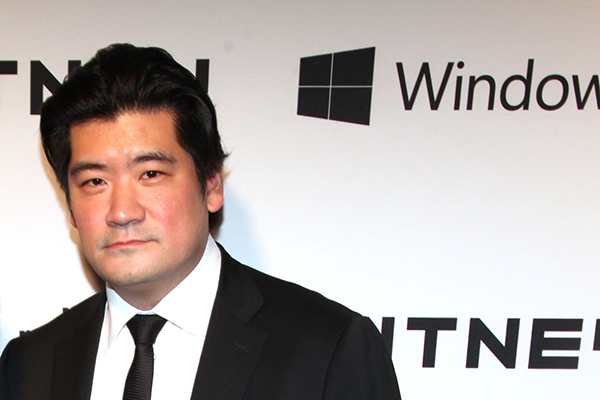
Richard Chang. Courtesy of photographer A. De Vos, © Patrick McMullan.
18. Richard Chang
Real estate, hotel, and media tycoon Richard Chang collects across the board from emerging to established artists. One area he has focused on in particular is German artists, such as Anselm Kiefer and Sigmar Polke. In the mid-career category, he has been buying several American abstract painters such as Laura Owens and Jacqueline Humphries. Chang is also an avid supporter of young and emerging artists, such as Harold Ancart and Kevin Beasely. He is currently vice chair of the International Council at Tate and is also the president of Performa, as well as a trustee of MoMA PS1 and the Royal Academy of Arts.